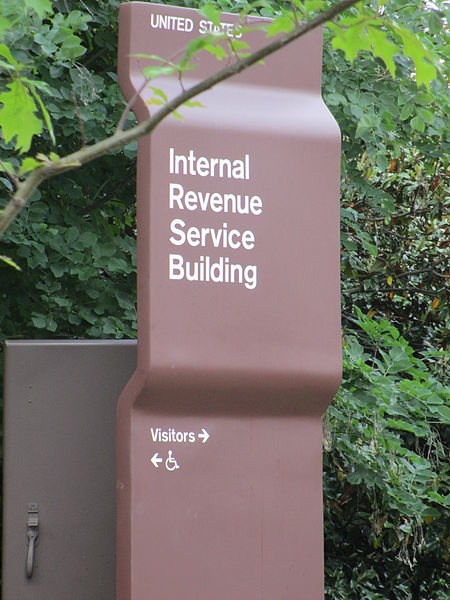| In this example, you are the owner of a small business that performs computer consulting services. In order to purchase equipment and to cover other growth required expenditures, you have borrowed $150,000 from a bank. | |
| As part of your agreement with the bank, you need to have annual financial statements prepared, and submitted within 90 days after the end of your business fiscal year. | |
| The financial results at the end of the first year are promising. The gross revenue of the business is $850,000, and expenses are $575,000, leaving a profit of $275,000. | |
| You ask your accountant if your business will need to pay income taxes on a profit of $275,000, which if you assume is taxed at a rate of 35% calculates to $96,250, leaving an after tax profit of $178,750. | |
| Your accountant tells you the income tax may be less if your business files its income tax returns using the cash basis of accounting, which (subject to IRS rules and regulations), is an acceptable method. | |
| Under the cash method of accounting, the revenues of a business are calculated by including as revenue only the amount of services that your customers have actually paid for, and expenses are deductible only when your vendors have actually been paid. | |
| In our illustration the business at the end of its fiscal year has $200,000 of accounts receivable from customers, and owes vendors $50,000. | |
| So a simplified calculation of taxable income is as follows: | |
| Net profit on an accrual basis of accounting | $ 275,000.00 |
| Less amounts due from customers | (200,000.00) |
| Plus amounts due to vendors | 50,000.00 |
| Taxable profit using cash basis of accounting | $ 125,000 |
| Income tax based on cash basis of accounting | $ 43,750 |
| This example is for illustration purposes only |
All posts by Tyler Lynch
Tax Law Changes for 2013
United States tax law is always changing. Some of the significant changes effective in 2013 are outlined below.
1) The highest regular tax rate on individuals has been increased to 39.6 %.
A 39.6% income tax rate now applies to taxable income over $400,000 for singles, $425,000 for heads of household and $450,000 for married couples filing jointly.
2) In addition there is a “Net Investment Income Tax” of 3.8% on taxpayers whose “Modified Adjusted Gross Income” also exceeds “THRESHOLD” amounts beginning at $200,000 for single tax filers and $250,000 for Married Filed Jointly. This tax is levied on the smaller of the filer’s net investment income or the excess of modified Adjusted Gross Income over the applicable dollar threshold. Investment income includes interest, dividends, payments of substitute interest and dividends by brokers, capital gains, annuities, royalties and passive rental income.
3) An additional Medicare tax of 9/10 of one percent is levied on taxpayers whose wages and/or self-employment income exceeds various “THRESHOLD” amounts, beginning at $200,000 for single tax filers and $250,000 for MFJ
If you are interested in tax planning for 2014 or would like more information regarding the effective changes you can contact us either by phone at 617-354-3814 or by e-mail at info@tylerlynchpc.com. You could also obtain other financial articles by visiting our website at www.TylerLynchPC.com/corner.
TAXSPEAK: Terms – “DIF”
In selecting specific tax returns for audits, the IRS does its own form of data drilling. It has established various categories such as High Income/High Wealth Taxpayers (HIHW), High Income Non Filers (HINF), and Discriminant Index Function (DIF).
As the IRS examination documentation states, DIF is a mathematical technique used to score income tax returns for examination potential……Each return measured under DIF receives a DIF score. Generally the higher the score, the greater the audit potential. DIF score information is treated as confidential, and is not disclosed to taxpayers.
The IRS “dirty dozen” tax scams for 2013, includes identity theft, Phishing (internet fake emails and websites), hiding income offshore, impersonation of Charitable Organizations, and misuse of trusts.
TAXSPEAK: Terms – “Medical Expenses”
In its publication regarding “Medical Expenses”, the IRS identifies 80 different types of medical expenses which may be deductions in a Federal Form 1040 as an itemized expense. A list is shown below.
| DEDUCTIBLE | NOT DEDUCTIBLE |
| Acupuncture | Baby Sitting, Childcare, and Nursing Services for a Normal, Healthy Baby |
| Alcoholism | Controlled Substances |
| Ambulance | Cosmetic Surgery |
| Annual Physical Examination | Dancing Lessons |
| Artificial Limb | Diaper Service |
| Artificial Teeth | Electrolysis or Hair Removal |
| Autoette | Flexible Spending Account |
| Bandages | Funeral Expenses |
| Birth Control Pills | Future Medical Care |
| Body Scan | Hair Transplant |
| Braille Books and Magazines | Health Club Dues |
| Breast Pumps and Supplies | Health Coverage Tax Credit |
| Breast Reconstruction Surgery | Health Savings Accounts |
| Capital Expenses | Household Help |
| Car | Illegal Operations and Treatments |
| Chiropractor | Insurance Premiums |
| Christian Science Practitioner | Maternity Clothes |
| Contact Lenses | Medical Savings Account (MSA) |
| Crutches | Medicines and Drugs From Other Countries |
| Dental Treatment | Nonprescription Drugs and Medicines |
| Diagnostic Devices | Nutritional Supplements |
| Disabled Dependent Care Expenses | Personal Use Items |
| Drug Addiction | Swimming Lessons |
| Drugs | Teeth Whitening |
| Eye Exam | Veterinary Fees |
| Eyeglasses | Weight-Loss Program |
| Eye Surgery | |
| Fertility Enhancement | |
| Founder’s Fee | |
| Guide Dog or Other Service Animal | |
| Health Institute | |
| Health Maintenance Organization (HMO) | |
| Hearing Aids | |
| Home Care | |
| Home Improvements | |
| Hospital Services | |
| Insurance Premiums | |
| Intellectually and Developmentally Disabled, Special Home for | |
| Laboratory Fees | |
| Lactation Expenses | |
| Lead-Based Paint Removal | |
| Learning Disability | |
| Legal Fees | |
| Lifetime Care—Advance Payments | |
| Lodging | |
| Long-Term Care | |
| Meals | |
| Medical Conferences | |
| Medical Information Plan | |
| Medicines | |
| Nursing Home | |
| Nursing Services | |
| Operations | |
| Optometrist | |
| Organ Donors | |
| Osteopath | |
| Oxygen | |
| Physical Examination | |
| Pregnancy Test Kit | |
| Prosthesis | |
| Psychiatric Care | |
| Psychoanalysis | |
| Psychologist | |
| Special Education | |
| Sterilization | |
| Stop-Smoking Programs | |
| Surgery | |
| Telephone | |
| Television | |
| Therapy | |
| Transplants | |
| Transportation | |
| Trips | |
| Tuition | |
| Vasectomy | |
| Vision Correction Surgery | |
| Weight-Loss Program | |
| Wheelchair | |
| Wig | |
| X-ray | |
Medical expenses may be deducted by a taxpayer if the total amount exceeds 7.5% of “Adjusted Gross Income” (AGI), and a spouse or dependent.
TAXSPEAK: Terms – “Fringe Benefits”
In its publication regarding “Fringe Benefits”, the IRS identifies 21 different kinds, ranging from Achievement Awards to Working Condition Benefits. The list of different types of fringe benefits is shown below.
Cafeteria Plans
Accident and Health Benefits
Achievement Awards
Adoption Assistance
Athletic Facilities
Dependent Care Assistance
Educational Assistance
Employee Discounts
Employee Stock Options
Employer-Provided Cell Phones
Group-Term Life Insurance Coverage
Health Savings Accounts
Lodging on Your Business Premises
Meals
Moving Expense Reimbursements
No-Additional-Cost Services
Retirement Planning Services
Transportation (Commuting) Benefits
Tuition Reduction
Working Condition Benefits
The key question about any of these benefits is “Is it taxable to the taxpayer, wholly excluded, or partly taxable?” There are different and complicated rules described by the IRS in their publication regarding fringe benefits.
The professionals at Tyler Lynch PC are happy to help our clients interpret the tax deductibility of items in the above categories.
TAXSPEAK: Terms – “Alternative Minimum Tax”
The tax calculation of the “ALTERNATIVE MINIMUM TAX” reminds me of the coin flip where you were told, “Heads I win, Tails you lose”. What this amounts to is that your tax liability is computed using two different methods and tax rates, and the taxpayer ends up paying the higher tax computed under either rate.
Various itemized deductions such as state income taxes, local real estate taxes, medical expenses, and miscellaneous expenses are not allowed in computing the Alternative Minimum Tax liability. Nor is the taxpayer allowed any personal exemptions.
Much of the services that Tyler Lynch PC offers to our clients involve tax planning simulations which compare the difference between “Regular Tax”, and “Alternative Minimum Tax”, and suggesting ways to minimize them both !
TAXSPEAK: Terms – “Sunset”
When we think of the word sunset, an image of colorful beauty may emerge, and we may remember that we missed a great photo of sun, clouds, and horizon. In the TAXSPEAK arena, there is an entirely different meaning.
A tax rule that is called “sunset” is one that expires after a certain date. The “Tax Relief Reconciliation Act of 2001″, had several expiring provisions which affected the personal tax rates in general, and the dividend and capital gains tax rates in particular. These changes are effective in the tax year 2013.
For taxpayers whose taxable income is above an “applicable threshold”, the highest tax rate in 2013 increased from 35% to 39.6%. Also the tax rate on “qualified dividends” and long term capital gains is now 20% instead of 15%, for those above the threshold. The thresholds are $450,000 for taxpayers who file “joint returns”, $425,000 for “heads of household”, $400,000 for “single” filers and $225,000 for “married taxpayers filing separately.’
TAXSPEAK: Terms – “Deduction” and “Credit”
In his novel, 1984, George Orwell, an English author introduced a term “NEWSPEAK”, which consisted of synthetic words used to express a special meaning, often political.
In our time we are required to pay income taxes using rules that seem more complex than any literature, even the Bible. The tax reporting and payment rules are set forth in the Internal Revenue Code, and supporting regulations.
As of 2013, according to Commerce Clearing House, the number of pages exceeded 73,000. For purposes of this blog entry and future blogs, I use special words, definitions, and rules describing income and other federal taxes, and call them “TAXSPEAK TERMS”.
For example, let’s discuss the difference between a “tax deduction” and a “tax credit”. Let us assume that a taxpayer can use $1,000 as a tax deduction or a tax credit. Which is worth more? Here are the assumptions.
The taxpayer’s tax rate on “taxable income” is 28%. The tax that is owed before using either the deduction or the credit is $6,300. In this example the taxpayer does better by using the tax credit instead of the tax deduction.
The credit reduces the tax liability by $1,000, and the deduction lowers it by $280. The value of the credit is dollar for dollar, and the value of the tax deduction is $1,000 times the tax rate of 28%.
LOOKING BACK TO 1905: TWO OF THE FACES OF STANDARD OIL
When the 20th Century began, a single company controlled the lighting market for kerosene lamps and gas lighting. The electric light bulb won in urban areas by the beginning of World War I. Standard Oil was split into many separate companies as a result of an anti-trust suit decided by the U.S. Supreme Court. It is interesting to read about the psychology of power, which doesn’t seem to have changed in the past 100 years.
Thomas William Lawson, a Boston stockbroker and author, wrote a series of articles called “Frenzied Finance”, about Standard Oil Company, which at one stage of its existence, controlled more than 80% of the oil refining and distribution business in the United States. Lawson had been, at different times, both an ally and an adversary to Standard Oil. His exposure of Standard Oil appeared in Everybody’s Magazine. Here is his description of the Standard Oil “System”.
First, there is a fundamental law, from which no one— neither the great nor the small—is exempt. In substance it is: “Every Standard Oil’ man must wear the Standard Oil’ collar.”
This collar is riveted on to each one as he is taken into “the band,” and can only be removed with the head of the wearer.
Here is the code. The penalty for infringing the follow¬ing rules is instant “removal.”
1. Keep your mouth closed, as silence is gold, and gold is what we exist for.
2. Collect our debts to-day. Pay the other fellow’s debts to-mor¬row. To-day is always here, to-morrow may never come.
3. Conduct all our business so that the buyer and the seller must come to us. Keeps the seller waiting; the longer he waits the less he’ll take. Hurry the buyer, as his money brings us interest.
4. Make all profitable bargains in the name of “Standard Oil,” chancy ones in the names of dummies. “Standard Oil” never goes back on a bargain.
5. Never put “Standard Oil” trades in writing, as your memory and the other fellow’s forgetfulness will always be re-enforced with our organization. Never forget our Legal Department is paid by the year, and our land is full of courts and judges.
5. As competition is the life of trade—our trade, and monopoly the death of trade—our competitor’s trade, employ both judiciously.
6. Never enter into a “butting ” contest with the Government. Our Government is by the people and for the people, and we are the people, and those people who are not us can be hired by us.
Always do “right.” Right makes might, might makes dollars, dollars make right, and we have the dollars.
The enumerated “rules” seem familiar in 2013, as they were in 1905. However there is one umbrella rule that shades the others. Know the rules of the arena and game in which you are playing. When playing an unfamiliar game, you can more easily be trapped by what you don’t know, than what you do know.
In the arena of taxation, employing a competent tax counselor can help you avoid some of the hidden tax traps.
KEEPING SCORE: The IRS “Discriminate Function”
When you want to make a loan application for a house purchase or any other borrowing from a bank or a finance agency, you become aware that a credit rating exists on you, based on various criteria including a history of paying prior loans on a timely basis, adequate income to support loan repayments, and various other factors.
It turns out that the IRS also keeps score on filed tax returns, as a means for selecting additional tax returns for future audits. The IRS term “Discriminate Function” is their name for this process. To quote from the IRS Publication 556,
“Your return may be selected for examination on the basis of computer scoring. A computer program called the Discriminate Inventory Function (DIF) assigns a numeric score to each individual and some corporate tax returns after they have been processed. If your return is selected because of a high score under the DIF system, the potential is high that an examination of your return will result in a change to your income tax liability.”
Some of the conditions that make an IRS tax examination more likely include:
1. High Income. The overall audit rate for filed tax returns is about 1%; it increases to about 12% if your income is $1,000,000 or higher.
2. Failing to Report Taxable Income. For many taxpayers, part of their income is reported to the IRS electronically including wages, interest, dividends, consulting services, capital gains, and so on. The IRS matches the amounts you show on your tax return to their records, and if there are differences, you may receive a IRS notice assessing additional taxes.
3. Taking large charitable deductions as a percentage of your income. For non cash donations over $500, you are required to include IRS Form 8283, which provides details regarding the gift; for donations over $5,000 you need an appraisal.
4. Claiming a home office deduction for business use of a portion of your home. There are detailed requirements regarding expense documentation and use of space.
5. Deducting real estate rental losses. If you own residential or business real estate, and real estate management is not your primary occupation, you may have a tax loss on the rental activity. This is not unusual when depreciation expense is considered. But you begin to lose the tax benefit of the rental loss if your adjusted gross income is more than $100,000, and the benefit is phased out when your AGI exceeds $100,000.
6. Failure to keep adequate records regarding business travel, entertainment, and automobile expense.
7. Being engaged in a proprietary business that is not profitable. The IRS may question the business nature of your effort if you do not make a profit on 3 out of 5 years, and consider your activity a “hobby”, not entitled to business deductions.
8. Running a cash business. The IRS is concerned that cash based businesses such as restaurants, do not report all of their income. Their audit guide instructs agents how to test cash-intensive businesses, including how to interview owners, and noting various ways that income may not be reported.
9. Failing to report foreign bank accounts. You are now required to file the IRS form TD F 90-22.1, Report of Foreign Bank and Financial Accounts by June 30 of each tax year.
In 2011, the IRS established an Office of Compliance Analytics whose mission was “to materially improve tax compliance and develop a more robust data-driven, analytic culture across the IRS ….” Clearly, the IRS is not reducing its data sampling techniques for US filed income tax returns.
In 2011, the IRS established an Office of Compliance Analytics whose mission  was “to materially improve tax compliance and develop a more robust data-driven, analytic culture across the IRS ….” Clearly, the IRS is not reducing its data sampling techniques for US filed income tax returns.
was “to materially improve tax compliance and develop a more robust data-driven, analytic culture across the IRS ….” Clearly, the IRS is not reducing its data sampling techniques for US filed income tax returns.








